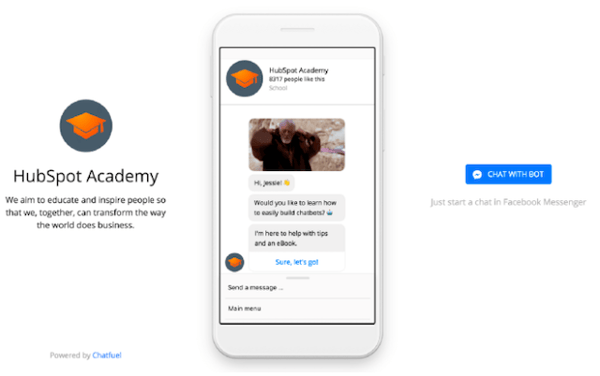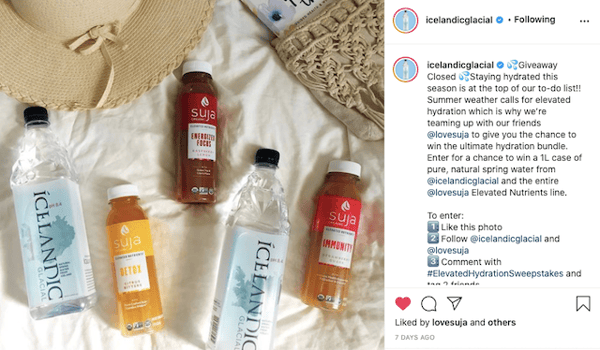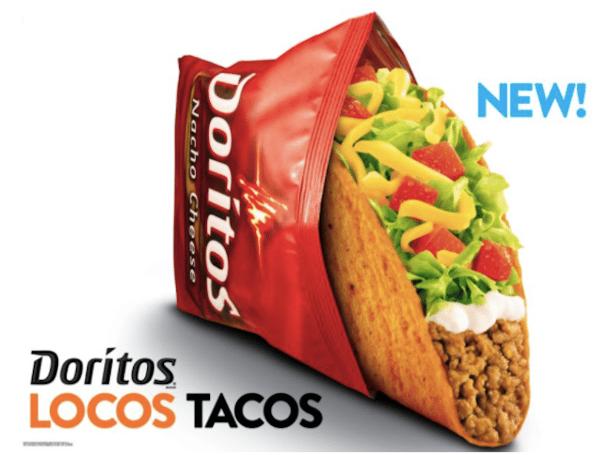Co-Branding vs. Co-Marketing
Co-branding is a strategy where two or more brands align to increase exposure in their industry, often by creating new products or services together. Co-marketing is the process of two brands promoting each other's offerings to their respective audiences, without having to create new products or services.
Co-branding and co-marketing are both examples of how sometimes more is better. One brand may be doing fine on its own, but it can do great with the partnership of another brand.
These benefits of a partnership can have lasting effects for years to come.
Both co-branding and co-marketing are becoming more common as brands seek to combine their unique strengths, energize their social media, and spark a truly memorable collaboration.
Before you can reap the benefits, it’s important for you to understand exactly what’s at stake. It can be easy to confuse co-marketing with co-branding, and that leads to missed opportunities.
Let’s take a closer look.
What Is Co-Branding?
Co-branding or a brand partnership is a marketing strategy that involves two or more businesses entering a strategic alliance to combine market strength and increase brand exposure. With co-branding, both brands may fuse their brand identities together to create unique logos, color schemes, and other brand identifiers.
Co-branding provides an abundance of benefits for both brands when they are able to leverage the value of a new product or service for their respective customer bases. At its core, co-branding is synergy and often occurs when a large brand takes on a small brand or for a limited amount of time when two brands form a partnership.
The Benefits of Co-Branding
Co-branding is a great way to grow your business and to build lasting relationships with other brands. Here are some more in-depth benefits that co-branding can provide to your business:
It Is Cost-Effective.
When you develop a new product or service with a partner brand, both brands share the costs. This means testing, development, marketing, and distribution costs are split.
And if all goes well, your revenue should increase, helping your bottom line and providing you a great return on investment.
It Provides Value to Loyal Customers.
Brands that decide to partner typically want to build something fresh and innovative. They may look at common problems that both target audiences have, and they work together to create solutions to these pain points.
This is valuable to loyal customers and also gives both brands the opportunity to gain new customers.
It Gives Both Brands More Talent to Share.
Co-branding allows two groups of talented people to come together to work on new ideas. This can provide a new and exciting perspective, and it helps to contribute to a productive environment.
It Can Improve Brand Reputation.
If one brand is particularly well-known and has an established reputation, the other brand can benefit from this. Aligning yourself with a reputable brand helps prospects and customers to view your brand as trustworthy and reputable as well.
It Increases Market Reach.
The brand you choose to partner with may have a similar audience to yours, but they may have customers who aren't yet familiar with your products or services.
Co-branding efforts allow you to get the exposure you need to tap into markets you couldn't reach if you were to remain on your own.
The Best Examples of Co-Branding
Here are three examples of successful co-branding to get you inspired:
Taco Bell and Doritos
Source: Yahoo! Finance
Perhaps one of the most popular and recognizable co-branding efforts is between Taco Bell and Doritos. Doritos sells deliciously flavored tortilla chips, and Taco Bell sells tacos made out of hard tortilla shells. It is a match made in heaven.
They mashed up the two products to create the notable Doritos Locos Taco, a taco with a nacho cheese flavored Dorito shell. They marketed their product by mixing together their brand identity and logos to create unique packaging and brand images.
Apple and Nike
Apple and Nike partnered a few years ago to create the Apple Watch Nike+. The watch has a Nike sports band and various other sporting features for runners, bikers, and other athletes.
Both brands helped take performance watches to a new level to provide value for their customers.
Red Bull and GoPro
Red Bull and GoPro teamed up to produce content, distribute products, and innovate new ideas together. Both of these brands are dedicated to going to extremes.
RedBull sponsors a number of extreme sporting events and is one of the most popular energy drinks worldwide. GoPro's point of view cameras are made to film extreme sports.
They are a match that complements each other well, and bringing their brands together can delight their customers even more.
What Is Co-Marketing?
Co-marketing is closely related to co-branding, but they are not quite the same. Co-marketing takes place when brands with similar audiences partner together to market and promote each other's products or services.
With co-marketing, the brand partners aren’t creating a unique new product or service as a result of their work together like co-branding. Instead, they look for ways to effectively share their customers and build awareness for both brands – it’s somewhat similar to cross-selling in the sales world.
The goal of a co-marketing campaign is for both parties to gain desired results, such as increased visibility, sales, and market reach.
The Benefits of Co-Marketing
Co-marketing gives your business access to more customers and creates opportunities. Here are some other benefits of these kinds of strategies:
It Allows You to Form Long-Term Relationships With Other Brands.
Co-marketing allows you to partner with and create relationships with brands similar to your own that could lead to positive opportunities in the future. It's also a great way to work with brands that may have a wealth of information to share with you.
It Helps Boost Your Brand's Reach.
Partnering with another brand gives you access to new customers and possibly new markets that you haven't considered before to expand your reach.
It Can Help You Stay on Budget.
Co-marketing partnerships often involve splitting the marketing budget. This can help to increase your return on your investment as you reduce your marketing costs and boost your brand's reach.
It Gives You More Opportunities to Delight Customers.
Brands that choose to co-market often create promotions, giveaways, and other great deals for customers to create more awareness for the partnership.
This helps increase customer satisfaction, especially if your partner brand offers products or services that are complementary to your own.
It Provides You With Extra Marketing Support.
When you partner with another brand to market your products, you gain an extra marketing team. This means you gain more input and support on marketing efforts for your new co-marketing campaigns.
The Best Examples of Co-Marketing
Here are three real-world examples of co-marketing that are successful and motivating:
HubSpot and Chatfuel

HubSpot and Chatfuel joined together to create content in the form of an ebook. The ebook helped marketers who used HubSpot understand chatbots better, and it helped Chatfuel gain popularity.
The ebook is on HubSpot's website, and in order for people to view it, they must fill out key information. There are also two calls to action (CTAs) at the bottom of the landing page.
Sprout Social and Moz
Sprout Social teamed up with Moz to provide their target audience value because they knew that many of their clients also needed help with SEO. They partnered to provide a free webinar that addressed how to improve social sharing to increase SEO.
The partnership helped to boost the webinar's reach beyond what each brand could achieve on their own.
Icelandic Glacial and Suja

Icelandic and Suja partnered to market their products together on social media.
They created posts with information about giveaways on their respective Instagram and Facebook pages. The giveaways helped both parties to obtain more followers and gain more exposure.
How to Get Started With Your Co-Branding or Co-Marketing Strategy
If you’re excited to leverage the power of collaboration for your own brand, there’s an easy way to get started. Follow a few simple steps to hit the ground running.
1. Discover What Is Special About Your Brand.
It is essential to figure out what makes your brand special. This could be anything unique or endearing about your brand that helps to attract customers and admiration from other brands.
Hopefully, you have a good sense of your "why" – As in why do you do the things you do, why you have the values you have, and why your customers choose you over your competitors.
If you discover what makes your brand special, then you will likely be able to find other brands that align with your purpose to help leverage your brand.
2. Evaluate Your Goals.
Before you can get started on co-marketing and co-branding, you need to figure out what your marketing goals are. When you have a good idea of what you hope to achieve, you will better understand how to choose the best brands to partner with.
You should seek to partner with brands that can help you meet or exceed your goals.
3. Find the Brands That Complement Yours.
Next, all you have to do is find brands that share similar customers – in terms of interests, buying power, and worldview – with convergent (not competing!) interests.
The idea is to have a brand that fits in well with yours to provide some unique and exciting experiences for your customers.
Some things go hand-in-hand, like a Doritos tortilla shell at Taco Bell, while other brands like Pepsi and Coke are bitter rivals who offer extremely similar products. Find the brand that fits in with yours.
4. Determine Ways to Work Together.
A detailed, cohesive marketing report is the best way to spark cooperation from a would-be brand partner, so think this plan through carefully. A good collaboration is a natural offshoot of what you already have – one that will leave customers saying, “Why didn’t I think of that?"
One marketing campaign or one new joint product can receive a lot of attention. Once you determine how to work together, both parties should collaborate to promote content to create awareness.
As the market advances and more competition is created, brands have the opportunity to partner for the benefit of both businesses. Co-marketing and co-branding are two ways for creative companies to build true win-win situations.
Not only do customers take notice, but it can be the start of a long and beneficial “brand friendship.” The potential is endless!



Erika Giles
Erika is a Marketing Copywriter at Bluleadz. She is a huge fan of houseplants and podcasts about conspiracy theories. She spends most of her free time reading, writing, and enjoying the outdoors.